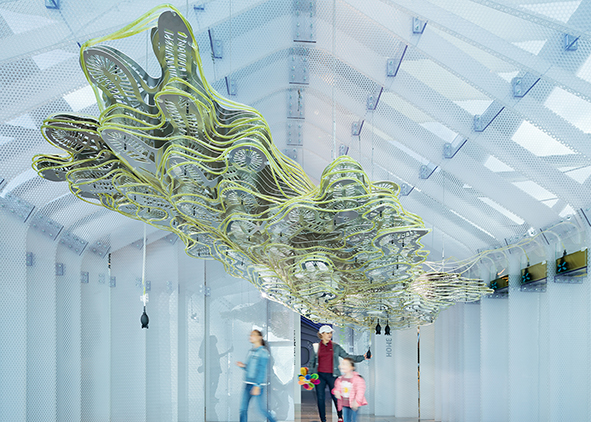The second life of micro-organisms. Bio-digital design for a new ecology of space and behaviour
DOI:
https://doi.org/10.19229/2464-9309/942021Keywords:
systemic design, bio-digital design, restorative design, biotechnology, dark ecologyAbstract
To reflect today, as designers and researchers, on the issue of Second Life, is to pose questions not only about the potential contemporary articulations of the term within a disciplinary field defined by knowledge that intertwines sectors like Urbanism, Architecture, Interior Design and Design but also to explore the very concept of life rendering living organisms – both human and not – as an active part of the speculation and the eventual experimentations giving new meaning to actions like regeneration or reuse. To do so, it is necessary to amplify the range of intervention and to engage other disciplines like biology and computer science, but also philosophy, anthropology and many more. An example of this practice is systemic design, a method defined by the combination and integration of systemic thought, computational design, biotechnology and prototyping. It is an extended approach to design – ranging from the micro to macro – incorporated in applications where projects and installations become interactive laboratories based on interspecies collaboration. A testament to this approach is the work carried out by a multidisciplinary entity like ecoLogicStudio, through theory and practice.
Downloads
Article Metrics Graph
References
Antonelli, P. and Tannir A. (eds) (2019), Broken Nature – XXII Triennale di Milano, Electa, Milano.
Ballocchi, A. (2018), “Biologia e digitale – L’architettura di domani passa da qui”, in Wise Society, 16/02/2018. [Online] Available at: wisesociety.it/architettura-e-design/biologia-digitale-architettura-pasquero/ [Accessed 15 May 2021].
Bateson, G. (1977), Verso un’ecologia della mente [or. ed. Steps to an Ecology of Mind, 1972], Adelphi, Milano.
Bullivant, L. (2012), New Arcadians – Emerging UK Architects, Merrell Publishers Limited, London.
Morton, T. (2019a), Cosa sosteniamo?, Aboca, San Sepolcro.
Morton, T. (2019b), Come un’ombra dal futuro – Per un nuovo pensiero ecologico, Aboca, San Sepolcro (AR).
Nicoletti, G. (2008), “La resurrezione della carne”, in Domus, n. 910, pp. 78, 79.
Otto, F. (2008), Occupying and Connecting – Thoughts on Territories and Sphere of Influence with Particular Reference to Human Settlement, Axel Menges, Stuttgart.

Downloads
Published
How to Cite
Issue
Section
License
This Journal is published under Creative Commons Attribution Licence 4.0 (CC-BY).
License scheme | Legal code
This License allows anyone to:
Share: copy and redistribute the material in any medium or format.
Adapt: remix, transform, and build upon the material for any purpose, even commercially.
Under the following terms
Attribution: Users must give appropriate credit, provide a link to the license, and indicate if changes were made; users may do so in any reasonable manner, but not in any way that suggests the licensor endorses them or their use.
No additional restrictions: Users may not apply legal terms or technological measures that legally restrict others from doing anything the license permits.
Notices
Users do not have to comply with the license for elements of the material in the public domain or where your use is permitted by an applicable exception or limitation.
No warranties are given. The license may not give users all of the permissions necessary for their intended use. For example, other rights such as publicity, privacy, or moral rights may limit how you use the material.


















































































